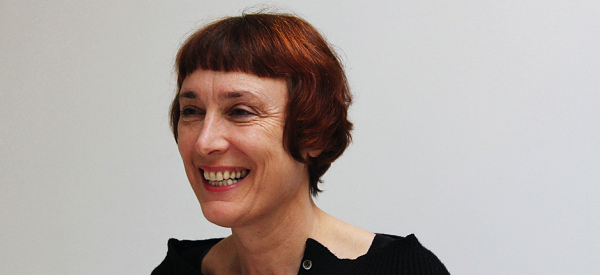THIS WEEK’S MUSE
CORNELIA PARKER

“You make an open-ended proposition and the audience completes it somehow. That’s what you hope an artwork to be-a constantly living thing.”
Cornelia Parker is an English installation artist and sculptor. She came to prominence in the 1990s and remains one of the most important British artists of her generation.
She was born in 1956 in Cheshire, northwest England. Her mother was German and was a nurse in the Luftwaffe during the Second World War, and her British grandfather fought in the Battle of the Somme in the First World War. She studied art and design in the late 1970s and had her first solo museum exhibition at the Institute of Contemporary Art Boston in 2000.
Parker’s work deals with themes of destruction, change, metamorphosis and—on a practical level—the space between objects or parts of objects. By subjecting objects to a destructive process, she aims to “release the potential contained within” and thereby question our relationship to the materiality of the culture into which we are so firmly embedded.
She wants her work to have a freedom of meaning and invoke a different understanding to each person who sees it. So, meaning in her work becomes entwined around and within that person’s life, education, beliefs, nationality, or experience. “I don’t want it to have a fixed meaning, she said. “I like work that has an ambiguity to it.” The responsibility of the viewer is, therefore, an essential element of her work, albeit a largely subconscious one.
As an artist, Parker is hard to categorize, and it is perhaps as easy to discuss her through the materials she uses in her art. Everyday materials; consumer goods and ex possessions; things that—originally at least—represented materialism – the wasteful and obsessive material culture into which are so solidly embedded.
“Capitalism compels us to work ourselves to death in order to stuff our houses with things we don’t need. Perhaps this is one thing art can do: create a new aesthetic, one of austerity.”
She sites Marcel Duchamp as an influence and often uses found objects with very specific histories—banned pornographic tape, worn out musical instruments, remains of burned out buildings—as her ‘canvas.’ In other cases, such as with her work Cold Dark Matter: An Exploded View (an exploded garden shed) she produces objects only to destroy them and carefully reassemble the pieces. For Parker, the process and the materials are as important as the object as they once were in their intended use.
Her art, and its presentation are as confrontational as it is powerful. In 1997 she exhibited Mass (Colder Darker Matter) – the suspended, charred remains of a church that had been struck by lightning in Texas. Eight years later, she made a companion piece Anti-Mass, using charcoal from a black congregation church in Kentucky, which had been destroyed by arson.
Parker isn’t entirely sure why she makes the art she does. “It seems to have no function in society,” she says, “beyond people using it as a sounding board seems to make it a valid enough thing to spend my life doing.”
A retrospective of Cornelia Parker’s work is on show at Tate Britain, London, until fall 2022.
“The best ideas come out of getting lost.”
HAPPENING
Wednesday, August 10, rom 9:30am–12:30pm
Strawberry and Lemon Rolls
With Linda Sellner

Create yummy strawberry rolls loaded with berries and lemon.
$54 – Member, $60 – Non-Member
DETAILS & TICKETS
